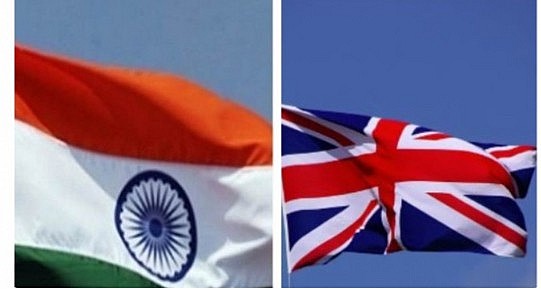New India-UK FTA focuses on expanding trade and investment
 |
By reducing tariffs, broadening market access, and strengthening cooperation across key sectors including textiles, pharmaceuticals, information technology, food processing, green energy, auto parts, footwear, furniture, jewellery, chemicals, machinery, and sports goods, the agreement aims to significantly enhance bilateral trade. It also seeks to drive job creation, boost investment flows, and provide vital support to MSMEs and startups.
The recently signed India–United Kingdom Free Trade Agreement (FTA) marks a transformative milestone in global trade diplomacy. Signed on 24 July 2025 in London by Indian Prime Minister Narendra Modi and UK Prime Minister Keir Starmer, the pact was finalized after nearly three years of intense negotiations. It stands as one of the most comprehensive trade deals India has concluded with a developed economy in recent years.
The agreement covers trade in goods and services, investment, intellectual property, e-commerce, rules of origin, customs facilitation, and government procurement. By sharply reducing or eliminating tariffs on a wide range of products and expanding market access, the FTA is poised to redefine economic relations between the two nations.
One of the cornerstone features of the agreement is the elimination of tariffs on goods. The United Kingdom has committed to providing duty-free access to 99 percent of Indian exports. On the other hand, India will phase out tariffs on over 90 percent of UK exports over the next decade. This reduction in tariff barriers will directly benefit Indian sectors such as textiles, leather, gems and jewellery, marine products, pharmaceuticals, and IT hardware, while UK exporters will gain improved access to India's fast-growing consumer base in sectors like high-end automobiles, Scotch whisky, processed food, and advanced machinery.
In the services sector, the FTA has made groundbreaking progress. India has secured preferential access for its IT, business consulting, and audiovisual sectors, while the United Kingdom has agreed to liberalize rules for the movement of Indian professionals. The deal facilitates short-term business visas, intra-corporate transfers, and post-study work visas for Indian graduates in the UK. Additionally, both sides have agreed to pursue mutual recognition of professional qualifications in fields such as accounting, architecture, and legal services.
Investment promotion and protection is another integral aspect of the agreement. The FTA incorporates an investment chapter that ensures fair treatment of investors, safeguards against expropriation, and introduces a transparent dispute resolution mechanism. The deal is expected to enhance investor confidence by reducing regulatory uncertainties and promoting long-term capital flows in sectors such as renewable energy, banking, insurance, infrastructure, and retail.
The digital economy and e-commerce also receive significant emphasis. For the first time in an Indian FTA, comprehensive provisions on digital trade have been included. These address data protection, cybersecurity cooperation, and barriers to cross-border digital transactions. The agreement also discourages unjustified data localization requirements, benefiting Indian and British IT and fintech companies by encouraging innovation and digital connectivity.
India–UK trade has shown strong momentum in recent years. The total bilateral trade between the two countries rose from USD 15.4 billion in FY 2020–21 to USD 22.7 billion in FY 2024–25. India continues to maintain a positive trade balance, with a surplus of USD 4.3 billion in the last fiscal year.
The structure of trade between India and the UK is complementary and strategically important. India's primary exports include garments, textiles, gems and jewellery, engineering goods, petroleum products, transport equipment, spices, pharmaceuticals, and marine products. The FTA’s elimination of UK tariffs on 99 percent of Indian goods is expected to make these exports significantly more competitive. Indian exporters, particularly small and medium enterprises, stand to gain from reduced costs and improved access.
Labour-intensive sectors in India such as textiles, apparel, leather goods, handicrafts, and marine exports are poised to benefit the most from the FTA. These sectors employ millions of workers, particularly from rural and semi-urban areas. With tariff elimination, Indian products will become more price competitive in the UK market, driving higher export volumes and generating employment across supply chains. Enhanced demand for Indian garments and lifestyle products is expected to significantly boost production in clusters like Tirupur, Ludhiana, Surat, and Kanpur.
India’s micro, small and medium enterprises (MSMEs) and startups stand to gain enormously from the FTA. With simplified trade facilitation, reduced compliance burdens, and digital trade support, MSMEs will find it easier to access the UK market. The FTA also includes capacity-building provisions, access to public procurement, and technology transfer mechanisms which are tailored to benefit innovation-driven startups and product-based MSMEs.
In contrast, India imports machinery, precious and semi-precious stones, engineering goods, medical devices, chemicals, and high-end technology from the UK. With reduced tariffs, British exports such as alcohol, confectionery, processed foods, and specialty chemicals are likely to see strong growth. The UK’s exports of cutting-edge technology and capital goods will also support India’s efforts to modernize its manufacturing base. The agreement provides for streamlined customs procedures and mutual recognition of standards to reduce transaction costs and enhance predictability for traders.
Investment relations between India and the UK have been strong and mutually beneficial. In FY 2022–23, India received USD 1.74 billion in foreign direct investment from the UK, up from USD 1 billion in the previous fiscal. Cumulatively, UK investments in India have reached USD 34.29 billion since April 2000, placing the UK among India’s top ten investors. British companies have invested across sectors such as infrastructure, renewable energy, financial services, education, and retail.
India, on its part, has become the second-largest investor in the UK in terms of the number of investment projects. Indian firms are active in pharmaceuticals, IT, automotive manufacturing, and industrial engineering. Companies such as Tata Group, Infosys, Wipro, Sun Pharma, and Mahindra have made significant contributions to the UK economy. The FTA will deepen this investment partnership by ensuring better protection for investors, reducing compliance costs, and supporting collaborative ventures.
Strategically, the FTA strengthens the India–UK Comprehensive Strategic Partnership and enhances bilateral cooperation in areas such as climate action, digital innovation, green technologies, and skill development. It reinforces the two democracies' commitment to a rules-based global trading system at a time when protectionism is on the rise.
In conclusion, the India–UK FTA complements India's evolving trade strategy, which now focuses more on bilateral trade arrangements rather than relying solely on multilateral platforms. This is a landmark development that promises to unlock new avenues of trade, investment, and strategic collaboration. It is expected to double bilateral trade to over USD 50 billion by 2030, create thousands of jobs, and enhance consumer welfare in both countries. By addressing tariff and non-tariff barriers, simplifying customs and regulatory processes, and expanding market access for goods and services, the FTA offers a blueprint for the future of global trade diplomacy.



